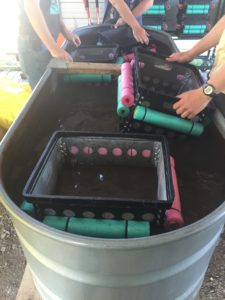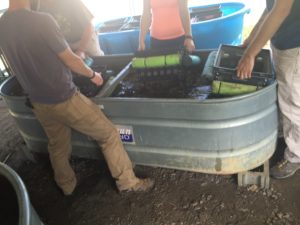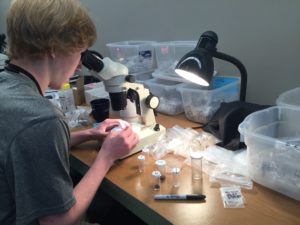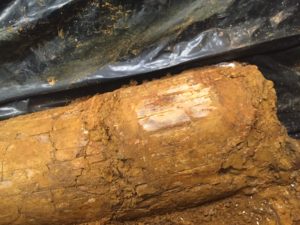The Natural History Museum at the Gray Fossil Site realistically has four section that all work together to fuel a cohesive unit. The first is operations (which I did my first week with the museum), the second is lab and field work which really fuels the whole operation because without fossils the site would not exist, the third is the education section that really helps connect with the community, and the third is collections which are where the bones are stored for future research. This past week I really dug into the meat of the museum. Shawn Haugrud manages both the field and lab sections of the museum. He is extremely passionate about his work and really took the time to teach me more about the exciting things happening out in the field. Being a history and literature person, I don’t have an extensive knowledge of paleontology but I learned more than I could have imagined this week. The first half of the week was out in the field digging and water screening. Water screening is an extensive process that the grad students (whom I shadowed) take part in every day from 9-12.
While in the field in the black sediment, the paleontologists in training put every spec of dirt they chip away into yellow bags to eventually water screen for micro-fossils. This process is long and an extremely intense arm workout but leads to many new species being discovered in the lab. Let me just tell you, my arms were worn out after this experience a few days in a row. After a lunch break the team then heads out to the pit to start the search for fossils.
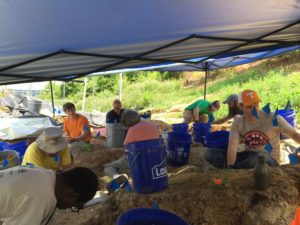
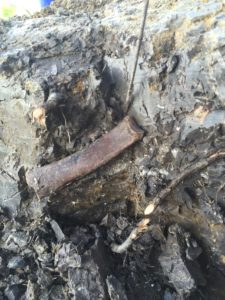
Luckily the museum supplied tents which keep the summer heat extremely manageable or I would have melted in the sun. From 12:30-5 (with a short popsicle break around 3) the group dug carefully for fossils. I found a few unrecognizable pieces but the coolest find was an arm bone from a tapir. I realized that I don’t exactly have the patience for this kind of work but I really have a deep respect for those who are passionate about it. On a side note, if you are looking for D&D Masters, look no farther than paleontologists because over half of this group was certified. After being outside in the sweltering heat, Shawn let me go into the lab to see what the preservation and microfossil picking was all about.
The picture on the left is one of the volunteers picking/identifying bone fragments while the picture above on the right is a progress picture of my baby that I worked on for my whole time in the lab. I cleaned a huge chunk of mastodon tusk in preparation to seal and preserve it. In the lab, I also learned how to make the special glue that they use to both bond fossils and seal them. While the field part was very fast paced, I really enjoyed the lab because of all the specific skills that I acquired. Without these two functions of the museum, there would be no need for the rest of the building or employees. Every single day the grad students are finding major pieces of bones that will be studied for years and years. It was very satisfying to be part of this section for the week and I have a newfound respect for paleontologists and museum volunteers alike.
